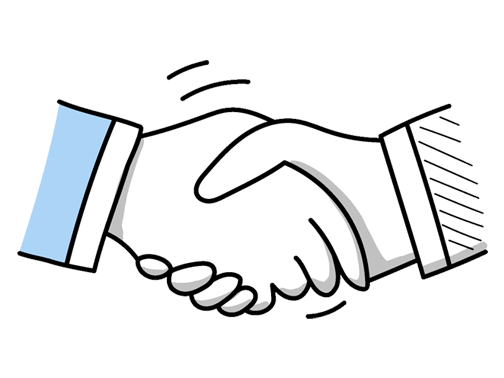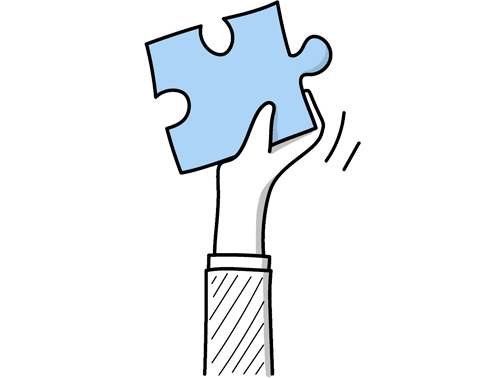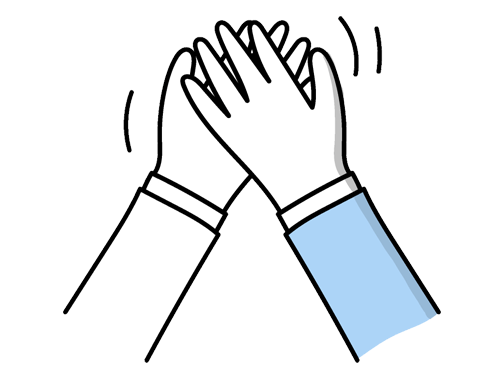Scaffold Supervisor Interview Questions (2025 Guide)
Find out common Scaffold Supervisor questions, how to answer, and tips for your next job interview
Practice Interviews Online - Identify your strengths and weakness in a realistic Scaffold Supervisor mock interview, under 10 minutes
Practice Now »Scaffold Supervisor Interview Questions
This question is designed to assess your ability to stay calm and act decisively under pressure, which is crucial for safety and efficiency on site. In your answer, describe a specific situation where you quickly evaluated the risks, made a clear decision, and ensured the team's safety and project progress.
Example: During a project, strong winds suddenly picked up while we were mid-assembly. I quickly halted work and secured all materials to prevent accidents. Communicating clearly with the team, I reorganised tasks to safer areas until conditions improved. This swift response kept everyone safe and avoided potential damage, showing how staying calm and decisive on site is crucial.
Questions like this assess your ability to handle real-world challenges by showing how you analyze problems, involve your team, and implement effective solutions to ensure safety and project success. In your answer, clearly describe the specific scaffold safety issue you faced, explain the steps you took to resolve it with your team, and highlight the successful outcome and what you learned.
Example: On one project, we faced unexpected weather delays that put us behind schedule. I reassessed the plan, coordinated closely with the team to adjust shifts, and ensured safety wasn’t compromised despite the tighter timeline. By staying flexible and communicating clearly, we caught up without incidents. It reinforced for me how important it is to adapt quickly and keep everyone aligned when challenges arise.
What they want to know is how you keep your team focused and driven to complete tasks on time under your supervision. You need to explain how you clearly communicate deadlines, motivate your team through recognition and support, and address challenges quickly to keep the project on track.
Example: To keep the team focused, I make sure everyone understands what’s expected and why deadlines matter. I check in regularly, offering support and recognising their hard work to keep spirits high. When challenges come up, I encourage open discussion to find practical solutions together. For example, on a recent project, addressing concerns early helped us avoid delays and kept the whole team motivated and on track.
Interviewers ask this to assess your understanding of safety and compliance in scaffolding. You need to say you regularly inspect components, follow manufacturer guidelines, and ensure proper assembly and load distribution.
Example: To ensure a scaffold’s structural integrity, I start by carefully checking all components meet safety standards before assembly. During setup, I monitor that everything is correctly fixed and stable. Regular inspections are key, especially after weather changes or modifications. For example, on a past project, spotting a loose brace early prevented potential hazards. Staying vigilant and maintaining open communication with the team helps keep the scaffold safe throughout the job.
Interviewers ask this to understand your practical experience and how you handle responsibilities and challenges. You need to briefly describe key projects, your specific role, and how you solved problems to show your skills and adaptability.
Example: I’ve worked on a variety of projects, from residential builds to large commercial sites. On a recent job, I coordinated scaffold setup for a multi-storey office block, ensuring safety and efficiency under tight deadlines. Challenges like unexpected weather meant quick adjustments, but clear communication helped keep everything on track. My focus has always been on maintaining high standards while supporting the team to meet project goals smoothly.
This question checks that you have the necessary legal and safety qualifications to supervise scaffolding work responsibly. You need to state your relevant certifications, like a CSCS card and any specific supervisory qualifications, and briefly mention how these ensure you comply with UK safety standards such as the Working at Height Regulations.
Example: I hold the NASC Scaffolding Supervisor Safety Training Scheme certification, which is key for meeting UK safety standards on site. This qualification ensures I’m fully aware of current regulations and best practices. I also regularly update my skills through refresher courses to stay aligned with industry changes. For example, recent training on risk assessments has helped me improve job site safety and efficiency.
Employers ask this to understand how you ensure safety and accuracy in your decisions. You need to say you carefully review all relevant documents, assess risks, and consult with your team or experts before making a safe, informed choice.
Example: When faced with a decision, I start by gathering all the key details about the scaffold setup and any potential hazards. I weigh the pros and cons of possible solutions, always keeping safety front and centre. I also make it a point to discuss options with my team or other experts, as their insights often highlight things I might’ve missed. For example, on site, collaborating helped us spot a risk early before proceeding.
This interview question helps the employer understand your foundational knowledge and hands-on experience in scaffolding to ensure you’re qualified for the supervisor role. In your answer, clearly state your relevant formal education and certifications, then briefly describe any practical training or apprenticeships you’ve completed in scaffolding.
Example: I started with a City & Guilds qualification in scaffolding, which gave me a solid foundation. Alongside that, I completed an apprenticeship where I gained hands-on experience managing different scaffold structures. I also regularly attend refresher courses to keep up with the latest safety regulations and best practices, ensuring my knowledge stays current and I can lead teams effectively on site.
Interviewers ask this to ensure you understand key safety laws and can actively maintain a safe work environment. You should explain your knowledge of UK HSE scaffolding standards, describe how you conduct regular inspections and audits, and highlight how you promote safety through training and communication.
Example: While OSHA is US-based, I focus on UK regulations like the Work at Height Regulations and BS 5975 standards. I keep a close eye on site practices through regular inspections and toolbox talks, ensuring everyone understands risks and correct procedures. Building a safety-first mindset is key, so I encourage open communication and lead by example, sharing real situations where careful planning prevented accidents.
This question helps assess your conflict resolution and leadership skills, which are essential for maintaining a productive team. You need to explain how you listened to everyone involved, facilitated open communication, and achieved a positive outcome that improved team cooperation and morale.
Example: In one project, two team members disagreed over task responsibilities, which was slowing progress. I sat down with both separately to listen and understand their concerns, then brought them together to openly discuss and find common ground. By clarifying roles and encouraging cooperation, we eased tensions. This led to a smoother workflow and better communication across the whole team.
Questions like this assess your problem-solving skills and ability to maintain safety and efficiency under pressure. You need to say that you quickly analyze the issue to identify the cause, communicate clearly with your team to coordinate a response, and implement a safe, practical solution that keeps the project on schedule.
Example: When unexpected issues come up during scaffold installation, I first assess the problem quickly to understand the root cause. I then gather the team and communicate the situation clearly, ensuring everyone knows their role in resolving it. For example, on a recent project, we spotted a structural misalignment early and adjusted the design safely without delaying our schedule. Keeping safety and efficiency balanced is always my priority.
This interview question helps assess your attention to safety and detail, crucial for preventing accidents on site. You need to mention inspecting the base, frames, platforms, braces, and guardrails to ensure everything is secure and stable.
Example: When inspecting a scaffold, I focus on the stability of the base, ensuring all fittings and couplers are secure, and that platforms are fully decked without gaps. I check guardrails and toe boards are in place for safety. It’s also important to look out for any signs of damage or wear, like rusted components or loose boards. For example, noticing a loose coupler early can prevent serious accidents.
This interview question helps the employer see if you can recognize dangers and take action to keep the team safe. In your answer, clearly describe the hazard you spotted and the specific steps you took to fix it quickly and effectively.
Example: On one project, I noticed a section of scaffolding wasn’t properly secured, posing a risk during windy conditions. I immediately halted work, rechecked all fixings, and reinforced the structure. I also reminded the team about daily safety inspections. This quick action prevented potential accidents and kept the site safe without major delays.
This question helps the interviewer verify your past experience, reliability, safety compliance, and leadership skills through employer references. You should confidently say you can provide contacts who will confirm your work history, safety adherence, and team management abilities.
Example: Yes, I can provide references from previous employers who can speak to my hands-on experience and commitment to maintaining strict safety standards. They’ve also observed how I communicate clearly with my team and lead effectively on site. For example, my last supervisor often highlighted my ability to keep projects running smoothly while ensuring everyone followed compliance guidelines.
Interviewers ask this question to assess your practical knowledge of scaffolding types and your ability to apply safety and management principles effectively. You need to clearly describe the scaffolding systems you've worked with, explain why each is used in certain situations, and show how you supervise teams to ensure safe and compliant assembly.
Example: I've worked with various scaffolding systems, including tube and fitting, system scaffolds like Cuplock, and suspended scaffolds. Each has its specific applications and safety needs—for example, Cuplock is great for complex structures due to its flexibility. I always ensure my teams follow correct assembly procedures and safety checks, coordinating effectively to keep projects on track and secure. This hands-on experience helps me manage both the technical and team aspects efficiently.
Hiring managers ask this question to gauge your ability to proactively manage risks and keep the team safe during high-risk tasks. You need to explain how you assess hazards before starting work, communicate safety procedures clearly, and ensure everyone uses the right equipment properly and follows regulations.
Example: To keep my team safe at heights, I always start with a detailed check of the site to spot any risks early on. Before work begins, I gather everyone for a clear, no-nonsense briefing to ensure we’re all on the same page. I also make sure everyone uses the right gear and follows UK health and safety standards. For example, on a recent project, this approach helped us avoid any incidents despite challenging weather conditions.
Employers ask this question to see how you create a positive, productive environment that values diversity and teamwork. In your answer, focus on promoting open communication through regular meetings, assigning tasks based on individual strengths, and resolving conflicts by respecting different perspectives.
Example: When managing a diverse team, I focus on creating an environment where everyone feels comfortable sharing their ideas and concerns. I take time to understand each person’s strengths, which helps assign tasks that suit them best. When conflicts arise, I address them quickly and fairly, encouraging open dialogue to build trust. For example, on a previous project, this approach improved teamwork and efficiency despite different backgrounds.
Interviewers ask this to see how you address performance issues while supporting your team. You need to explain that you first identify the root causes, then provide training or mentorship, and finally motivate the team by recognizing progress and encouraging responsibility.
Example: When someone on the team isn’t meeting expectations, I first try to understand what’s causing the issue—whether it’s skill gaps, personal challenges, or something else. I then work closely with them, offering guidance or extra training to help them get back on track. At the same time, I keep the rest of the team engaged and accountable, so everyone stays motivated and we maintain a strong, supportive environment.
Questions like this aim to assess your hands-on experience and competence in scaffold supervision to ensure safety and compliance on site. You need to clearly state your total years of relevant experience and briefly mention the types of projects or environments you’ve supervised.
Example: I have over seven years overseeing scaffold projects, coordinating teams and ensuring safety standards are consistently met. For example, on a recent site, I managed the setup for a complex industrial build, which involved detailed planning and close communication with contractors. This hands-on experience has sharpened my ability to lead effectively while keeping the worksite safe and efficient.
Interviewers ask this to see how you handle high-stress situations where quick, accurate decisions affect safety. You need to explain how you quickly evaluate risks, stay calm, and clearly justify your safety-focused decisions.
Example: When faced with pressure, I first take a moment to understand the key facts before acting. Clear communication is vital, so I explain my decisions to the team to ensure everyone’s on the same page. Staying composed helps me focus on solutions rather than problems. For example, during a tight deadline, I calmly reorganised tasks, which kept the project on track without risking safety.
This interview question assesses your ability to organize work efficiently and ensure safety across multiple sites. You need to explain that you evaluate project deadlines, resource availability, and team capacity to prioritize tasks logically and maintain clear communication with all stakeholders.
Example: When managing several projects, I first assess deadlines and safety requirements, then allocate resources accordingly. I keep communication open with teams to stay updated and adjust plans as needed. For example, on a recent site, I prioritized a high-risk area by scheduling extra checks, ensuring safety without delaying other tasks. Staying flexible and organized helps me balance competing demands effectively.
Employers ask this to see how you manage information flow and prevent mistakes on site. You need to explain that you establish clear channels like daily briefings, encourage open feedback, and give clear instructions while confirming everyone understands the tasks.
Example: To keep everyone on the same page, I make sure we have straightforward ways to share info, like regular briefings and using radios on site. I encourage the team to speak up if anything's unclear or if they spot issues. Before starting any job, I run through the plan clearly and ask questions back to confirm everyone’s got it, which really helps avoid mistakes down the line.
Hiring managers ask this question to assess your knowledge of safety protocols and efficient workflow when handling scaffolding. You need to explain that you always plan the layout carefully, ensure all materials meet safety standards, follow step-by-step procedures, and continuously inspect the structure to prevent accidents.
Example: When erecting or dismantling scaffolding, I start by reviewing the site and risk assessment to ensure safety measures are clear. I organise the team, assign roles, and check all materials and equipment are in good condition. Throughout the process, I maintain clear communication and monitor progress closely. For example, on a recent project, this approach helped us complete safely ahead of schedule despite tight conditions.
Employers ask this question to ensure you prioritize safety and understand proper procedures to prevent accidents. You need to mention checking the scaffold’s stability, using personal protective equipment, and following load limits consistently.
Example: When working with scaffolding, I always ensure that the structure is properly inspected before use, checking for stability and secure fittings. I make sure all team members wear the right protective gear and follow safe access routes. Clear communication is key, so I regularly brief the crew on any hazards. For example, on one site, spotting a loose bolt early helped us prevent potential accidents.
Employers ask this question to ensure you prioritize safety and have a systematic approach to training new hires in essential procedures. You should explain that you create a clear orientation covering key safety rules, use hands-on demonstrations to teach practical skills, and regularly check that new team members understand and follow safety standards.
Example: When new team members join, I start by walking them through our safety protocols step-by-step, making sure everything is clear. I like to show practical examples on site, like how to properly secure scaffolding components, so they can see theory in action. Throughout the process, I check in regularly, asking questions and observing their work to ensure they’re confident and following the rules before they take on tasks independently.
Ace your next Scaffold Supervisor interview with even more questions and answers
Common Interview Questions To Expect
The interviewer is looking for a brief overview of your background, experience, and skills relevant to the position. Focus on your professional achievements and career goals.
Example: I have been working in the construction industry for over 10 years, with the last 5 years specifically as a Scaffold Supervisor. I have a strong track record of successfully managing scaffold projects and ensuring safety regulations are met. My goal is to continue growing in my role and contribute to the success of the team.
The interviewer is looking for a candidate to demonstrate their qualifications, experience, skills, and enthusiasm for the role. Answers should highlight relevant expertise and how they can contribute to the company's success.
Example: Well, I have over 10 years of experience in the scaffolding industry, including 5 years as a supervisor. I have a strong track record of ensuring safety compliance, managing teams effectively, and completing projects on time and within budget. I am confident that my skills and dedication will make a valuable contribution to your team.
Candidates can answer by stating a specific salary range based on research, mentioning their flexibility, or asking about the company's budget. Interviewers are looking for candidates who are realistic, confident, and have done their homework on industry standards.
Example: I've done some research and based on my experience as a Scaffold Supervisor in the UK, I'm looking for a salary in the range of £30,000 to £35,000. I'm open to discussing and negotiating based on the company's budget and benefits package. I want to ensure that my compensation is fair and competitive within the industry.
The interviewer is looking for how you handle criticism, your ability to reflect on feedback, and how you have used criticism to improve your work. You can answer by discussing a specific situation, your response, and the outcome.
Example: Sure! One time, a colleague pointed out that I had missed a safety protocol during a scaffold setup. I took their feedback seriously, reviewed the protocol, and made sure to follow it in the future. As a result, I became more vigilant about safety measures on the job site.
The interviewer is looking for examples of how you manage stress and stay calm under pressure. You can answer by discussing your problem-solving skills, ability to prioritize tasks, or experience in high-pressure situations.
Example: I handle pressure by staying organized and prioritizing tasks effectively. I also rely on my problem-solving skills to find solutions quickly in high-pressure situations. Overall, I stay calm and focused to ensure the job gets done efficiently.
Company Research Tips
The company's official website is a goldmine of information. Look for details about the company's history, mission, vision, and values. Pay special attention to any information related to their scaffolding projects or services. This will give you a clear understanding of what they do and how they do it. Also, check out their 'News' or 'Blog' section to stay updated with their recent activities and achievements.
Tip: Look for any specific projects or clients that the company is particularly proud of. Mentioning these in your interview can show that you've done your homework.
Social media platforms like LinkedIn, Facebook, and Twitter can provide valuable insights into the company's culture and operations. Look for any updates related to their scaffolding projects, any awards or recognitions they have received, and the kind of content they share. LinkedIn can also give you an idea about the company's size and the backgrounds of their current employees.
Tip: Follow the company on these platforms to stay updated with their activities. Engage with their posts if appropriate.
Stay updated with the latest news and trends in the scaffolding industry. This will not only help you understand the current market scenario but also make you aware of the challenges and opportunities the company might be facing. Websites like ScaffMag are a good source for such information.
Tip: Try to relate the industry trends with the company's operations during your interview. This will show that you have a good understanding of the industry.
Understanding the company's competitors can give you insights into its position in the market. Look for information about the competitors' services, projects, and strategies. This will help you understand what sets the company apart from its competitors.
Tip: Don't criticize the competitors during your interview. Instead, use this information to highlight the company's strengths.
Analyzing the job description thoroughly will give you a clear understanding of what the company is looking for in a Scaffold Supervisor. Look for specific skills, qualifications, and responsibilities mentioned in the job description. This will help you tailor your responses during the interview to show that you are the right fit for the role.
Tip: Use the same language used in the job description during your interview. This can make you seem like a good fit for the company culture.
Curveball Questions
How to respond to the silly questions where there's no right answer.
This question is looking for your creativity and ability to think outside the box. Common answers include Abraham Lincoln, Albert Einstein, or Leonardo da Vinci. An answer that provides a unique perspective or lesser-known historical figure will stand out.
Example: I would choose to have dinner with Amelia Earhart because of her pioneering spirit and determination to break barriers in aviation. I admire her courage and resilience in the face of challenges.
This question assesses your self-awareness and creativity. Common answers include super strength, invisibility, or the ability to fly. An answer that ties back to the role or showcases a unique skill will stand out.
Example: If I were a superhero, my superpower would be the ability to foresee potential risks and prevent accidents before they happen. As a Scaffold Supervisor, I believe this power would help me ensure the safety of my team and prevent any mishaps on the job site.
This question evaluates your adaptability and perspective on change. Common answers include the Renaissance era, the Roaring Twenties, or the future. An answer that showcases an understanding of historical context or a vision for the future will stand out.
Example: I would choose to live in the future, specifically a time where advancements in technology have made construction processes more efficient and safe. I believe that being part of that innovative era would allow me to contribute to the evolution of the industry.
This question tests your problem-solving skills and ability to prioritize. Common answers include a knife, a lighter, or a water purifier. An answer that shows creativity or resourcefulness will stand out.
Example: If I were stranded on a desert island, I would bring a solar-powered radio to signal for help, a multi-tool for various tasks, and a large tarp for shelter and collecting rainwater. These items would help me survive and potentially be rescued.
This question assesses your imagination and ability to empathize with different perspectives. Common answers include Harry Potter, Sherlock Holmes, or Wonder Woman. An answer that ties back to personal values or aspirations will stand out.
Example: I would switch lives with Atticus Finch from 'To Kill a Mockingbird' because of his unwavering moral compass and dedication to justice. Walking in his shoes for a day would give me a deeper understanding of integrity and empathy.
What to wear to an Scaffold Supervisor interview
- Choose clean, well-fitted clothes
- Opt for neutral or dark colours
- Avoid flashy or distracting patterns
- Wear comfortable, polished shoes
- Ensure your clothes are ironed and neat
- Avoid excessive jewellery or accessories
- Maintain good personal hygiene
- Opt for a smart-casual look
- A nice pair of trousers and a polo shirt
- A light sweater or jacket if needed
- Ensure your outfit is appropriate for the weather





